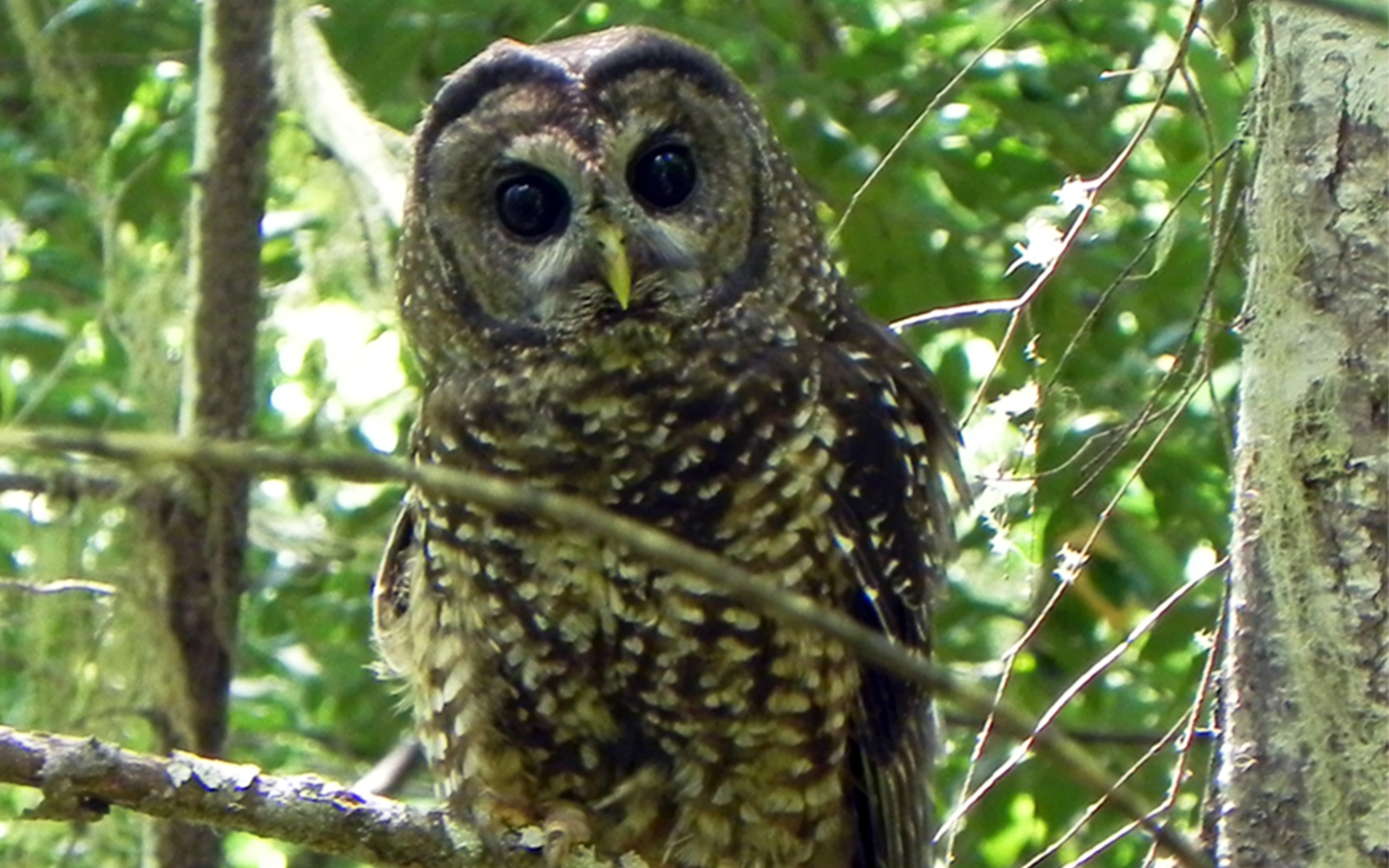For Immediate Release:
December 8, 2020
Contact:
Nick Cady, Cascadia Wildlands, 314-482-3746, nick@cascwild.org
Lawsuit filed against USFWS for failing to follow through with protecting the northern spotted owl
Today, a group of wildlife advocates filed a complaint in federal district court against the U.S. Fish and Wildlife Service (the Service) for falling to take multiple actions required by the Endangered Species Act to protect the northern spotted owl from extinction.
In 2015, wildlife advocates petitioned the Service to increase protections for the owl by “uplisting” the species from threatened to endangered due to declining habitat, effects of climate change, and competition from the invasive barred owl. The Service stated uplisting is warranted, committing to publish an analysis of the issue that would also satisfy a legal obligation to complete a five-year status review of the species. Since then, the Service has produced no such analysis, nearly a decade has passed since the last northern spotted owl species status review, and the northern spotted owl continues to slide towards extinction.
“The word for the U.S. Fish and Wildlife Service’s approach to northern spotted owl recovery is ‘negligent,’” said Susan Jane Brown, Wildlands Program director with the Western Environmental Law Center. “We’re at an inflection point for these iconic birds: With urgent action they can recover, but without it they could be wiped off the face of the Earth. Nine years of dithering from our wildlife managers is unjustifiable.”
“All the best available information suggests that the spotted owl is going extinct and doing so quickly,” said Tom Wheeler, executive director of the Environmental Protection Information Center. “The most recent survey data shows that the owl is in decline across its entire range and that the rate of decline is increasing. If we don’t act now and with great urgency, the other thing our grandchildren will inherit is the story of how we failed this owl.”
Timber harvesting in the Northwest has resulted in a widespread loss of spotted owl habitat across its range, which was a main reason for prompting the listing of the species in 1990. Owls depend on habitat provided by the dense canopy of mature and old-growth forests; unfortunately, those forest stands are still a target for logging throughout the bird’s historic range. The northern spotted owl is already functionally extinct in its northernmost range, with only one recognized breeding pair left in British Columbia.
“The mature and old-growth forest habitat that this species depends on is continually diminished, particularly from logging on our public lands. Every year there are fewer and fewer reproductive owl pairs,” stated Kimberly Baker, executive director of the Klamath Forest Alliance. “Despite this fact, the Service has allowed habitat destruction to continue for nearly a decade without considering population numbers on a regional scale. It’s beyond time for the Service to check the owl’s status and guard them from extinction.”
“Climate change-driven wildfires and the barred owl are new threats to the spotted owl,” said Joseph Vaile, climate director for the southwest Oregon-based Klamath Siskiyou Wildlands Center. “These new threats demand that we save every bit of ancient forest owl habitat that we have left.”
“Over the past four years, federal land managers have begun targeting mature and old-growth forests that provide essential habitat for northern spotted owls, and the U.S. Fish and Wildlife Service has whole-heartedly endorsed this logging,” said Nick Cady with Cascadia Wildlands. “We have converted enormous swaths of old-growth rainforest into fiber farms and timber plantations. This is one reason we are witnessing catastrophic fires and older forest species are going extinct. We over did it in the past, and the agency charged with putting on the brakes is green-lighting the most intensive logging we have seen in decades.”
“An endangered listing is a first step toward better protecting spotted owls and their old forest habitat,” said Dave Werntz, science and conservation director at Conservation Northwest.
In 1990 and in response to a court order, the Service listed the northern spotted owl as threatened, citing low and declining populations, limited and declining habitat, competition from barred owls, and other factors in the bird’s plight. Even after its listing, northern spotted owl populations have continued to decline, and the rate of decline has increased. In August 2020, the Trump administration settled a timber industry lawsuit by proposing to eliminate more than 200,000 acres of northern spotted owl critical habitat, further precluding this magnificent raptor’s recovery.
The organizations challenging the Service’s dilatory actions are the Environmental Protection Information Center, Cascadia Wildlands, Conservation Northwest, Klamath Forest Alliance, Klamath-Siskiyou Wildlands Center, Oregon Wild, and Audubon Society of Portland. They are represented by the Western Environmental Law Center.
###

